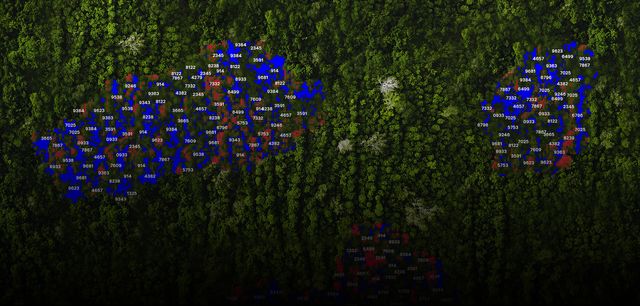23 June 2023
The Global Surface Intelligence company has developed a method that uses artificial intelligence and publicly available satellite data to create accurate and up-to-date inventories of forests. On the one hand, this is creating exciting opportunities for forest owners. Not only that, but the technology at the heart of the innovation will also record and measure other resources, enabling it to document crop failures for insurance companies, for example.
The Sentinel-1A radar satellite orbits the Earth at an altitude of 700 kilometres. Since 2014, it has taken countless pictures of the planet’s surface every single day. Along with other satellites, it is part of the Copernicus programme. This joint project of the European Commission and ESA is in the business of remote sensing: It provides data, running to several petabytes a day, on the state of the Earth's surface. These data are publicly accessible, which means that anyone can use them freely. Edinburgh-based company Global Surface Intelligence (GSI) has developed a method to extract valuable information for forest owners from this vast trove of data. To do this, the Scottish firm uses artificial intelligence and machine learning.
Until now, anyone wanting to know how many trees of which species were to be found in a specific area would have to send people to count them – either on the ground or using aerial photographs. This is a very imprecise method, however, and simply not practicable for large forests. In North America, there are commercial forests with an area of several thousand hectares which produce timber for many industrial purposes. With the remote sensing platform developed by GSI, the owners of such forests can also now receive real-time information about their stocks – regularly, repeatably and automatically.
“We don't just record the number of trees,” explains Peter Young, CEO of GSI. “We also provide information on the species, height and diameter of each tree.” These data are not only important for traditional forestry but also essential for a relatively new business model: “More and more companies are looking for ways to offset CO2 emissions to help meet their sustainability goals,” Young explains. “Forests are excellent an excellent way of doing this.” How much CO2 a tree can store depends on its type, size and age. “First of all, we identify where suitable tracts of forest happen to be in the first place. In which area we find which types of trees in which maturation period, and with which height and diameter,” Young says. “Then we approach the forest managers and ask if they’d be interested in offering the area for use on a CO2 offsetting platform.”
Getting help from a supercomputer
To evaluate the huge amounts of raw data from the Sentinel satellites, GSI also uses the University of Edinburgh’s supercomputer. GSI supplements the remote sensing data from the satellites with further information, for example from images taken by unmanned aerial vehicles. Founded in 2012, the company now has 15 employees, including environmental science specialists, data scientists, programmers and people with experience of programming or in the space industry. Like Peter Young, who, before joining GSI, spent eight years as CEO of one of the UK’s largest space companies.
In 2022, TÜV NORD invested indirectly in GSI through its subsidiary ATN. ATN represents the Aerospace business unit in the TÜV NORD GROUP. With this investment, Young and his team aim to further expand their forest inventory business.
GSI is also developing further applications that will make use of the company’s technology: “We're also looking at how we can use remote sensing in other business areas and industries, for example to document crop failures for insurance companies,” says Young.
Stephen Duffy is Managing Director of ATN subsidiary TECHNOLOGY UK and was additionally appointed to the board of Global Surface Intelligence (GSI) as Investment Director in the autumn of 2022. He sees great potential for the investor in the combination of remote reconnaissance, AI and machine learning: “Much of what the TÜV NORD GROUP does is about testing, inspection and certification,” Duffy explains. “With GSI, it will one day be possible to have some of these tasks done by AI.”




